The ever-growing need for energy efficiency demands intelligent pumping systems.
Electrical energy demand is projected to double by 2030, putting the world in the midst of a global energy dilemma. At the same time, there is a need to cut CO2 emissions in half to prevent dramatic environmental impact. While many factors contribute to this problem, as a primary energy consumer, commercial buildings present a large opportunity for efficiency improvements.
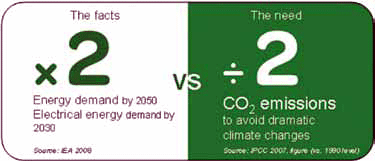
Figure 1. The global energy dilemma
Buildings account for an estimated 35 to 40 percent of the total energy consumed in the U.S., and HVAC systems (which include a significant number of pumps) may account for as much as 40 percent of that consumption.
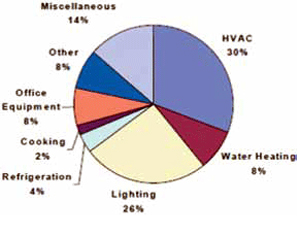
Figure 2. Commercial building primary energy consumption breakdown (from BTS, 2001; ADL, 1999, ADL, 2001)
While the term HVAC is generically used to describe the systems in a building that provide cooling, heating and ventilation, the reality is that two of the primary applications that comprise these technologies are pumps and fans. Figure 3 on page 64 shows how pumps and fans are typically incorporated into building structures.
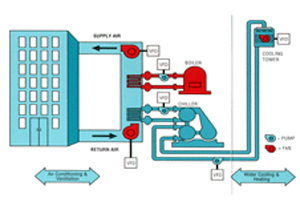
Figure 3. Typical building applications for pumps and fans
Improved Energy Efficiency and Decreased Environmental Impact
There are a number of trends in the North American building market ultimately affecting everyone from the original equipment manufacturer (OEM) to the end user. Two of the most significant are the drive for energy reduction and growing concern over the environmental impact:
- U.S. Green Building Council's (USGBC®) Leadership in Energy and Environmental Design (LEED®) Green Building Rating SystemTM—leads to tax incentives for end users
- Green Building Specifications have become the “typical spec” in the North American market
To take advantage of the benefits of these initiatives, energy reduction has become a primary goal for many commercial building owners and operators. For the HVAC and pump OEMs, this goal demands higher efficiency ratings for their equipment and lower firsts cost. For the end user, it means finding a cost-effective way to reduce energy consumption.
As you can see from the typical pump life-cycle cost profile (Figure 4 on page 64), over the lifetime of pumps, energy costs account for 40 percent of the total costs—everything comes together around energy consumption.
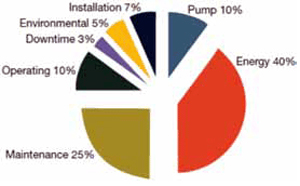
Figure 4. Typical pump life-cycle cost profile
Pump System Design and Operation
The way that the pump system is sized and operated is key. In many cases, the daily/weekly pump operating cycle varies greatly, resulting in less than optimum operating conditions—with reduced system efficiency and increased energy consumption. In other applications, pump systems may be oversized to allow for future expansion, which again reduces system efficiency and increases energy consumption. One example in commercial buildings may be simple differences in HVAC loading in the daytime (building occupied) versus nighttime (building empty).
Enhanced pump design is clearly a growing trend in the pump industry. Manufacturers are revamping designs to improve efficiency, using improved hydraulic designs. The result is improved operational economy, which will reduce the total life-cycle cost as noted in Figure 4.
The Importance of Maintenance
For pumping systems used in HVAC applications such as cooling towers, maintenance (25 percent of pump life-cycle costs) is crucial for ensuring the energy efficient operation of the pumps. An example of this would be partially clogged strainers or debris in the cooling tower sump. Lack of proper maintenance in this case would increase the head pressure on the pump and, therefore, increase the energy consumption.
The Benefits of Variable Frequency Drives
Another key element of the pump system design is the driver, which may include a variable frequency drive (VFD). VFDs offer several benefits in pumping system applications:
- If the pump is variable pressure and/or flow, then a VFD can provide more enhanced energy savings than mechanical means and potentially reduce total system costs.
- If the pump is a constant speed pump that is oversized, then reducing the pump speed can correct for the over sizing. This reduction in speed will also save energy due to the affinity laws.
- If the application is variable loading and has an oversized motor, the VFD can solve both challenges simultaneously.
In addition to energy savings, a number of additional benefits are realized by using VFDs in pumping applications:
- They reduce mechanical stress on the pumps and pump systems, resulting in longer life and reduced downtime/reliability issues.
- Less maintenance is required on the pump systems—valves and inlet guide vanes for example.
- Reduced inrush currents lower overall demand and reduce the likelihood of incurring peak power demand charges.
Add Intelligence to the Pump System Controls
Beyond using basic VFDs, adding intelligence to the pump control solutions provides additional benefits to energy efficiency gains, some of which include:
- Management of multi-pump systems to measure and optimize their operating cycle
- Linkage to building management systems, typically via BACnet or LonWorks, to provide real-time feedback and operational optimization
- Enhanced pump protection, resulting in longer life, increased operational efficiency and high reliability
- More closely matched pump/VFD operating parameters—the intelligence can ultimately be pump specific should the pump manufacturer elect to customize specifically to its equipment
- The intelligence could monitor pump operating parameters and conditions—such as vibration, leak detection, increased pressure, current draw and temperatures to name a few, and predictive maintenance could then be applied, which would reduce downtime
Several configurations of intelligent drives are available, the most simple being a VFD with embedded intelligence. Think of it as a mini programmable logic controller (PLC) embedded in the drive. All the benefits noted above can be provided in a simple, clean VFD package.
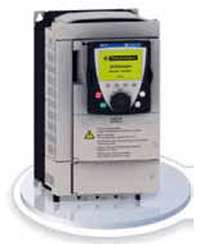 |
| Figure 5 (above). AC intelligent drive |
Another option for intelligent pumping is to incorporate a separate controller. This provides the ability to control not only the pumps but the associated fans and equipment that make up the entire HVAC system in which the pump is operating.
An example of this would be the cooling tower system. This system includes condenser water pumps, cooling tower fan(s) and the cooling tower itself. One controller can monitor and control the entire system to maintain peak system energy efficiency. The controller can determine the load on the system at any given time. The delta T of the condenser water is monitored by the controller and the proper signals are then sent to the cooling tower fan VFD(s) and condenser pump VFD(s). This signal represents the minimum operation required for the fan and pump motors in relation to the building load on the system. This information can then be shared with the building automation system (BAS) through BacNet or another communication protocol.
In a multiple-pump system that is connected to a single intelligent controller, the controller communicates with a human machine interface (HMI), illustrated in Figure 6. The operator sees a graphical representation of the pumping system. From the HMI, the operator can receive an abundance of information about the pumping system in an easy to understand format. Should a problem within the system arise, alarms will be generated at the HMI. When the HMI is linked to the BAS through BacNet or another communication protocol, the operator can monitor and control the entire HVAC system of the building from this point. This saves the operator a lot of time going up and down elevators and ladders.
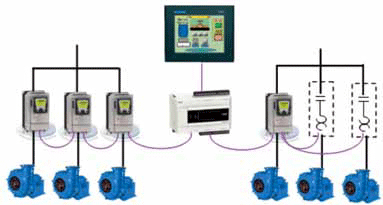
Figure 6 (above). Multiple-pump system connected to a single intelligent controller and HMI
Conclusion
Energy management in the HVAC realm is of growing interest, supported by key industry initiatives, economic incentives and demonstrated financial benefits to building owners. Pumps play a major role in all HVAC systems, and due to the nature of their application, design and operation, pumps provide an excellent opportunity to reduce costs and increase reliability in HVAC systems. Enhanced controls are at the center of such solutions. VFDs, enhanced by intelligent management solutions, will pave the way for system optimization in the future, enabling efficiency improvements in application areas such as commercial buildings.


